Bed bugs have become the USA’s national catastrophe. This is quite an unpleasant phenomenon although it seems untypical of developed countries, bedbugs have affected hundreds of thousands of American families. The scientists keep on experimenting and inventing new ways of trapping these bloodsuckers. Today, we’ll describe all the best known bed bug traps. How effective are homemade methods? Is an interceptor or a sticky trap better? Does life imprisonment for the bed bugs that have already infested your bed exist?
What you’ll learn from this Guide:
How Bed Bug Traps Work & Their Effectiveness
| Type | Peculiarities | Effectiveness |
| Homemade | Attracts with carbon dioxide. | Early detection only. |
| Glue | A special lure. | Early detection only. |
| Electronic Heat Dome | Attracts with heat. | If more attractive prey, such as humans, is around, the dome may not be effective. |
| Interceptor | A best seller. | Additional talc improves the trap’s effectiveness. |
| Mattress Cover | The cover is made of a special dense fabric, it must have a designated zipper. | All of the insects are forever imprisoned inside the cover. |
{code 416}
Types: Passive & Active Traps
Professional bed bug traps, or monitors, as they are often called in a scientific setting, are relatively new inventions, and are recommended as the first line of defense in bed bug management and prevention.
As of now, there are three types of bed bug traps available on the market and it’s important to discern the difference between them. Here, we’ll talk about passive and active traps, and we’ll cover the basic differences between those two traps and interceptors.
Active
An active trap uses a certain chemical lure, whether it’s the heat, carbon dioxide, or a pheromone, to attract bed bugs to the trap. These need to be used continuously for several days to detect the size of the infestation and take other necessary steps to control the bed bug population. Also, many active traps would require the use of electricity, which can become a limiting factor and is certainly a disadvantage. Another detracting aspect is the sometimes exorbitant prices of these, which can go way up to 600 dollars.
Passive
A passive one, on the contrary, does not use any type of bait, or lure, to bring bed bugs towards it. They usually come with a glue or pitfall design. The passive traps certainly are much better than visual inspections, which can be pretty inefficient; require less skill and money to purchase and use them; reduces the amount of immediate bed bug bites that would have happened if not for the trap. However, they are quite inefficient if you have a large bug infestation.
The Difference between a Bed Bug Trap and a Bed Bug Interceptor
Basically, interceptors are two cups, one inside the other, that can be easily placed underneath a bedpost. They will not work by themselves but require the presence of the human body on top of the bed that would work as an attractant to bed bugs (giving off the necessary body heat, pheromones, and carbon dioxide, in short, everything the bed bugs love). And since bed bugs are pretty bad at climbing slippery surfaces, they would not tackle this climbing quest and would get trapped inside the interceptor. Interceptors are also considered passive traps because they do not contain any chemicals, look like pitfalls, and can be used as a part of DIY bed bag management.
Top-5 Best Bed Bug Traps
Several types are available today: sticky, interceptors attached under bed legs and electronic ones which attract their victims with the heat of a lamp.
Glue Trap | Harris
This is a simple and cheap glue trap. A pack contains four sticky cardboards to be placed under furniture, bed and anywhere else. Leave them under your bed’s legs so that the bed bugs stick to it if they approach your bed. The product’s rating is not very high. Many customers have given negative feedback. Don’t expect Harris to deal with your issue on its own as it should be used for monitoring purposes only. The trap is accessible and safe, so why not give it a chance?
{code 759}
Glue trap: Check the current price
Electronic trap | Aspectek
Aspectek has improved a regular sticky trap and added a heat-exuding lamp to it. This increases the attraction rate of bed bugs, fleas and other blood-suckers. They are trapped in a sticky snare once they crawl or fly under the lamp.
The product is rated highly. The trap is used not only against bed bugs, but also flies, mosquitoes and any other insects which prefer heat or light. The device is safe, but any cat owners must bear in mind the fact that their pets might take a fancy to this heated toy and warm up near it.
{code 760}
Sticky + light trap: Check the current price
Climbup insect interceptor
Here is the most popular and best-selling bed bug trap. At the moment, it is not only a hit but a method to trap blood suckers that has been approved by the majority of entomologists. Almost all of them recommend using these traps. The University of California specialists, for instance, confirm the effectiveness of these devices: Interceptor monitors are a hybrid between active and passive (pitfall) monitors in that they rely on the presence of a host (a sleeping human) to attract hungry bugs and then trap the parasites en route to their meal. These small double-cupped monitors are easily installed under the legs of beds and other furniture items. Research has demonstrated that such interceptors trapped six times more bed bugs than were found from human visual searches alone.
Let us add that putting in some talc will complicate the insects’ attempts to escape. Use ClimbUp until all your domestic parasites have been completely eradicated. If they have managed to breed in multiple rooms, opt for a 12-pack set.
{code 761}
Interceptor: Check the current price
Ortho bed bug trap
This is a classic active bed bug trap that uses pheromones and glue to attract and trap bed bugs. It’s lightweight and easy to carry around, in case you want to take it with you while you travel. To start using the trap, you’ll need to remove the paper from a glue card, attach it to the bottom of the trap, click on a button to activate a pheromone, and place it near the bed. It’s pretty cheap, but you’ll need a lot of these since every time the thing catches the bugs, you’ll need to throw it in a trash, as they are not reusable. Unfortunately, the customers’ response was somewhat discouraging, with many saying that it didn’t catch bed bugs but rather mosquitos and other little insects.
{code 763}
Ortho bed bug trap: Check the current price
Raid Bed Bug Detector & Trap
The Raid trap falls into the same price range but for the price, you’re actually getting 4 of them, which is a pretty good deal. To start using them, break the traps apart, so you end up with separate small traps, place them under the bed spots of your bed and near the top of the mattress between the head of the mattress and the wall (as recommended by the manufacturer). The customers had more success with these detectors than with the previously described Ortho, but many testers still complained that it was hard to see the trapped bed bugs through dark trap exterior, even with a flashlight.
{code 764}
Raid Bed Bug Detector & Trap: Check the current price
Cons of bedbug traps
The main drawback of all these traps is that they provide monitoring only. When using them, make sure there are no bugs in your bed. If they have already infested your sleeping area, it is pointless for them to get off the bed. So, what should you do if it is already infected?
How to Trap Bed Bugs That Have Already Settled In Your Bed?
There is a product that can be unequivocally called bed bugs’ life imprisonment. There is no escape from it and no blood-sucker will be ever set free from there. We are talking about a special mattress cover.

According to the entomologists, 70% of the bed bugs in the house settle in the mattress, box spring and bed frame during a typical infestation. That is one of the priority tasks is to treat the infected bed and mattress and to protect the new one by using protective encasements |
It is basically the bigger version of a trap. All parasites living in your mattress will be forever trapped and will starve to death given that you’ve bought a decent mattress made of dense fabric with a proper zipper that won’t ever let any parasite out. Another condition is that you shouldn’t remove the cover for 12 months as this is the time it takes these tenacious creatures to die of depletion
There are many mattress cover manufacturers, the most popular brands are SafeRest, LinenSpa®, and Utopia Bedding. Their ratings are more or less the same, and the covers themselves practically do not differ from each other. The main requirement concerning this product is a “Bed Bug Proof” label. Most of them are waterproof and will protect you from dust mites.
You can also move to the living room and sleep on the sofa hoping that the starving blood-suckers will be forced to finally crawl down the bed legs in search of food… But we believe buying a mattress cover and having a sound sleep in your own comfy bed is simpler and faster.
{code 762}
Bed Bug Traps Comparison Chart
| Product | Type | Peculiarities |
| Harris | Glue trap. | The cheapest control product. |
| Aspectek | Electric glue trap with a bulb. | Attracts bloodsuckers by imitating body heat. |
| Climbup insect interceptor | Interceptor monitor. | The most effective control product, will catch 6x more parasites than you will be able to on your own. |
| Utopia Bedding Zippered Mattress Encasement | Mattress cover – a lifelong trap. | The biggest and most reliable bug prison. Do not take it off the mattress for 12 months. |
| Ortho bed bug trap | Pheromones and glue trap | That trap uses Pheromones and glue to attract and trap bed bugs. |
| Raid Bed Bug Detector & Trap | Detector & Trap. | Trap is designed for early detection bed bugs in both your home and while traveling. |
Will Traps Help You Get Rid of the Bed Bugs Once and For All?
Unfortunately, they won’t. The only 100% effective control product is a mattress cover which will only rid you of the parasites that have settled inside it. You will have to deal with other insects hiding in the wall cracks, behind the skirting boards and wallpapers and even on the ceiling for a long period of time. Refer to our guide “How to get rid of bed bugs” to learn about all the methods, mistakes and proper treatment.
How to use bed bug trap & where to place them
If you’ve chosen to use interceptors, then place them under the bedposts. It’s important to move your bed away from the wall, so the bed bugs would be left with no choice but climb into an interceptor.
Remember that if you’re not currently sleeping on the bed, then interceptors wouldn’t work, because they require the presence of a sleeping human body. Also, you’d need as many interceptors as possible to successfully detect and trap the active portion of the bed bug population. Researchers from Texas A&M AgriLife Extension advise using at least 12 interceptors per each bedroom that you believe is infested.
Any other passive trap should be just as well placed under the bed, or any other furniture that serves as a living habitat for bed bugs.
Active traps, again, should be placed anywhere near the infested furniture. If an active trap of your choice uses carbon dioxide as an active attractant, then you should be aware that each CO2 cylinder would operate for about 10 hours and you’ll need a new cylinder for each night of operation. More sophisticated options would include a larger receptacle for CO2 that would last up to five nights.
Precautions When Using Traps
One of the main concerns when using bed bug traps is what to do when the bugs have been trapped or collected. One of the popular methods is exposing the bugs to a very cold temperature, but it might just as well prove inefficient. Scientists from the Texas A&M AgriLife Extension recommend to dump the caught bugs into a plastic tub with vertical sides, fill it with soapy water, place the content of the closed tub into a plastic bag and throw it in a trash outside your house. Another method (which is obviously preferable) is to spray the bugs with a contact spray so they would die immediately. And only then trash them outside.
Another precaution is not to use bed bug traps alone. They might be okay to detect early or small infestations but won’t work for larger populations. Also, the bugs cannot necessarily travel to the host but can reside as close to the body as possible, in the nooks of the bed frame or mattress, rendering your traps useless.
How effective are bed bug traps in comparison with other methods
According to Dr. Wang, an Extension Specialist in Urban Entomology, using active traps proved to be “at least as effective as a thorough visual inspection, but not as effective as a seven-day deployment of insect interceptors.” Also, the results of his research indicated that the “homemade dry ice trap was the most effective monitor both in apartments with heavy and light bed bug infestations.” It’s important to note here that we are talking about detection and initial steps in the management of bed bug population. The interceptors or active traps alone won’t eliminate the bed bugs but would serve as a great starting point in bed bug control.
Homemade Bed Bug Traps
A few years ago, a National Geographic article devoted to a sugar, water, and yeast-based $1 trap invented in the Rutgers University, New Jersey was discussed actively on the internet. This yeast homemade bed bug trap recipe was contentedly promoted by bloggers.
The scientists suggest that you pour ten tablespoons of sugar, two tablespoons of yeast and one and a half liters of room temperature water in a cup, then place said cup on top of a flipped over dog bowl and leave for the night.
How does it work?
The idea is that it is carbon dioxide exuded by humans which is the main focus of all blood-suckers. All mosquito carbon dioxide traps act in this way. However, we have not encountered any commercially successful bed bug traps like this yet. Let’s figure out if they are indeed free, convenient and effective?
As the University of Rutgers, New Jersey expert Narinderpal Singh states, “the yeast ferments the sugar to release carbon dioxide—the gas that bedbugs use to track down sleeping human hosts. This irresistible vapor lures insects toward the trap from long distances, and in experiments, more than doubled the number that were captured.”

The blood-sucking insects focus on the secreted carbon dioxide. As the scientists plan, any bed bugs in the house are supposed to gather near the sources of carbon dioxide fermented by yeast. The result will let you decide whether domestic pest control is a necessity or an expensive luxury.
The magazine article claims that this handmade trap attracts three times as many bed bugs as others and is therefore more effective than the Climbup insect interceptor available in stores.
A cup full of yeast, on the other hand, doesn’t guarantee that it will attract bed bugs better than a human sleeping in the same room, as humans also exude both heat and carbon dioxide. In addition, when half asleep, you can forget about the slurry trap left in the darkness and step straight into it. Its action also lasts for only eight hours, so you will have to refill the yeast mixture daily.
Dry ice trap
The second homemade recipe has been invented in Rutgers University as well. This time, dry ice will serve as a source of carbon dioxide. The experimenters suggest placing the ice in an open 1/3 of a gallon (1.5 liters) thermos on top of a flipped over cat bowl. The outer walls of the bowl should be taped and covered in a thin layer of talc. Once trapped, the bed bugs won’t be able to detach from this talc and the dry ice will continue releasing gas for up to twelve hours.
A pound of dry ice is not sold without restrictions. You will have to place an order with special suppliers. Remember that dry ice will also slowly turn into gas even when kept in a freezer. Don’t store it in the freezer for over four days. Dry ice being a free trap is a contingent term as the transactional costs will involve you having to spend much time ordering ice whenever necessary.
Such measures are for preventive purposes only. They protect your bed from bed bugs crawling up from the floor. Carbon dioxide secreted by various objects won’t make them leave your warm beds. But are commercial devices better than homemade ones?
Active Traps: Experiments with Catching On Bait
The development of carbon dioxide-based methods of bed bug treatment is explained by the fact that they consume blood only. A new type of trap using the insects’ own odor is now being tested.
A team of Canadian scientists has radically decided to identify the substance that is responsible for grouping the bed bugs together. Back in the 1970s, the scientists learned that feces and chitinous covers left behind serve as attracting markers for these insects, as Wired cites Gerhard Gries and other researchers from the Simon Fraser University, Vancouver, Canada.
Wired also specifies that the last component is sensed by bed bugs only upon contact. Histamine, the same chemical produced by our white blood cells as part of the human immune response, acts as an ‘arrestant’ in combination with the other chemical blend. It makes the bed bugs stop walking and nestle in.
The scientists have demonstrated great courage by letting the insects feed on their blood. However, the bitten researchers have given the world hope for creating a new bed bug attractant that is more effective than any source of carbon dioxide. The future will show whether this ambition will be realized.
{code 419}
{code 125}

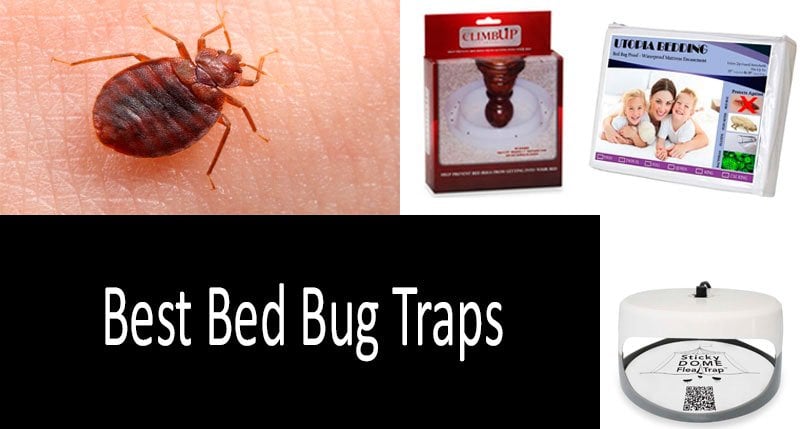






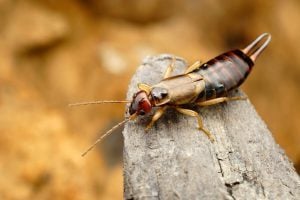
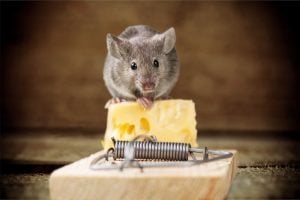
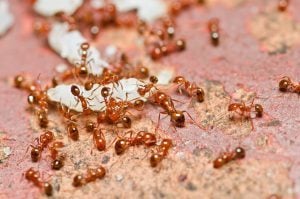
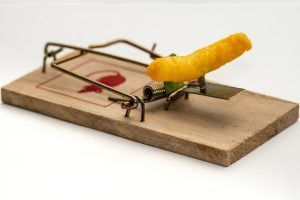
6 thoughts on “Bed Bug Traps [UPDATED 2022] Buyer’s Guide | Homemade vs Ready Traps | Comparative Review”
It all started on one night when I first felt bites, then itching. I didn’t feel well so I went to sleep in another room and bought bedbug traps. Despite negative feedback I thought I’d give them a try and not spend thousands of dollars on disinfection. I set them on my bed’s corners. After a few days I found one freshly captured bed bug and two dead ones. The traps are definitely worth it if you are patient.
We set these bed bug traps near the sofa to protect from bed bug infestation. They trapped a spider, lots of moths and no bed bugs, which is good as it proves that last time we managed to get rid of them.
We used a homemade bed bug trap after hiring an infected college student as a loader. The guy suffered from these bloodsuckers’ bites. We didn’t find a single bed bug and it gives us certain hope.
What attracts bed bugs in these traps? Which substances are used? We are thinking of using a homemade trap, but we don’t know where to start.
I think that traps are a great bed bug interceptor. We used Harris traps, and they proved to be the best. After two weeks of use we stopped finding any signs of bloodsuckers’ presence. It is a very effective product!
My husband designed homemade bed bug interceptors. I have no idea how he did it, but it works fantastically! We used in our second house where we don’t live. Everything is dusty there, and bed bugs appeared out of nowhere there. After these interceptors showed their effectiveness, we won’t buy any traps or other products.